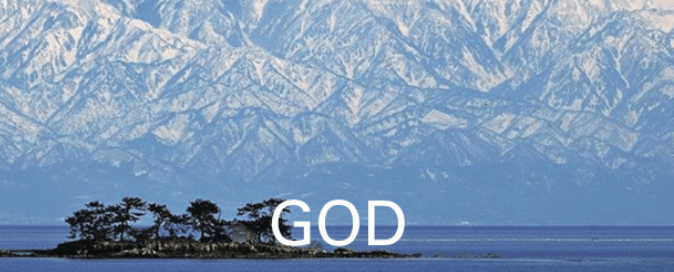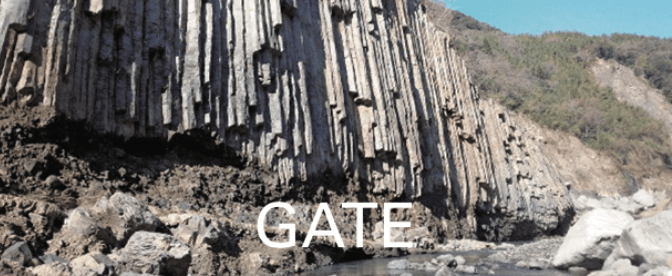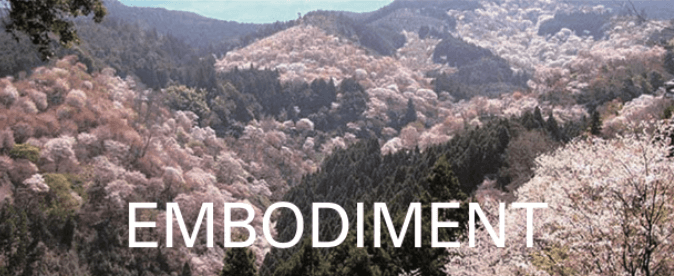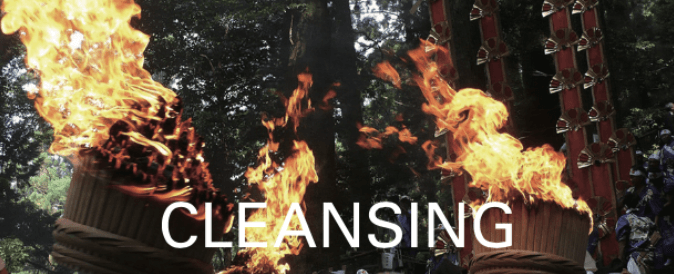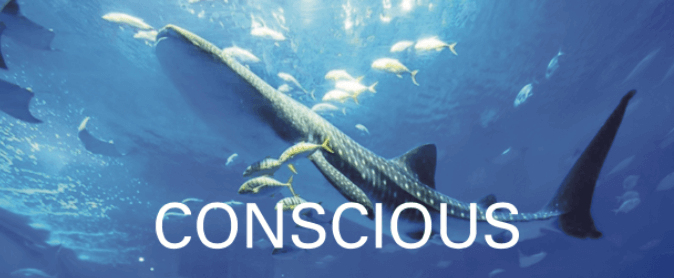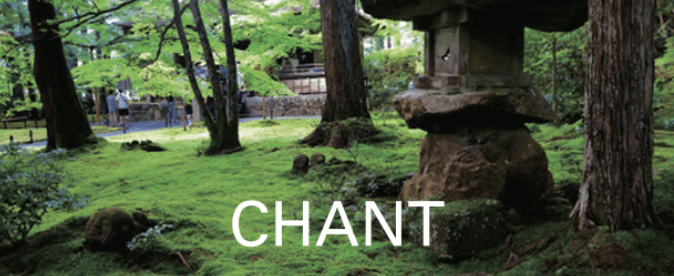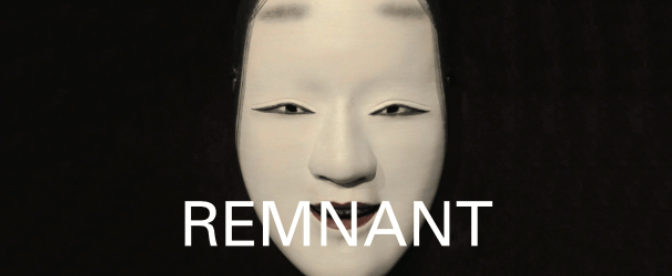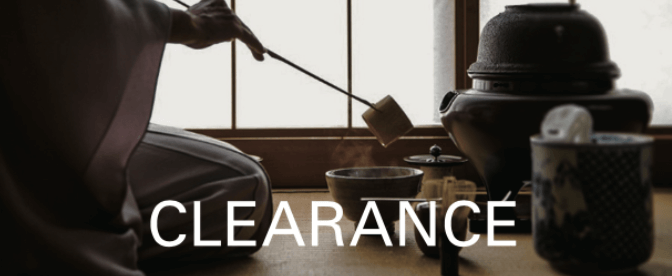
A walking path along the Katsura River from a small hill has 100-year-old and 30-year-old plum trees that bloom in the spring. There is Tokko no Yu, a natural spring which is said to have been created by Kobo Daishi Kukai (774 – 835), the founder of the Shingon sect. It was said that Kobo Daishi Kukai hit the rocks with Tokko, a Gilt-bronze Single-pronged Vajra, a weapon used as a ritual object to symbolize indestructibility and irresistible force, and the spring came up.
To the east of this spring, is an Eastern Orthodox Church with a Japanese-style structure and a Western-style exterior. To the west of this spring, there is a path through a bamboo grove.
To the south of this spring, Shigetsuden, at the foot of Mt. Shikayama, is the grave and family cemetery of Minamoto no Yoriie (1182 – 1204). Yorije was the 2nd shogun of the Kamakura Shogunate, which was built by Yoriie’s mother, Hojo Masako (1156 – 1225), the wife of Minamoto no Yoritomo, the 1st shogun of the Kamakura Shogunate and a political leader called the “nun shogun.”
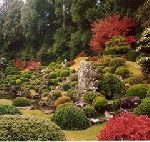
This temple appears on the plateau to the north of Oku-Hamana Lake, along side rivers that pour into the Lake. This plateau has the ruins and tombs from the Jomon period (16,000 years ago – 3,000 years ago), the Yayoi period (the 4th BC – 3rd century), and the Tumulus period (the 3rd– 7th century), including the ruin of the Great King of I no Kuni, the area of Iinoya, serving ritual ceremony.
This temple was founded in 733 by Gyoki (668 – 749), a Japanese Buddhist priest, and organizer of public works projects, like irrigation. It has been the Ii family temple for its 40 generations. The north garden of this main temple is an ornamental pond style garden, which was landscaped in the beginning of the Edo period (1603 – 1868), by Kobori Enshu (1579 – 1647), a feudal lord, a master of the tea ceremony, an architect and garden designer.
The rock arrangement resembles waterfalls and valleys, which expresses a crane and a tortoise as symbols of longevity, by combining with the entire artificial hill. The garden is also longing the Great King of I no Kuni.
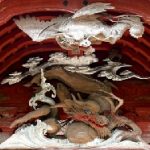
This temple is located on the mid slope of Mt. Takakurasan, overlooking the Pacific Ocean, in the front of Kamogawa Chiba. It is said to have been founded by Roben Sojo (689 – 773), a monk of the Kegon sect and the founder of Todaiji Temple Nara, in the Nara period (710 – 794).
The Fudodo, the hall dedicated to the Fudo Myoo (Wisdom Kings), was built in 1802 in the latter part of the Edo period (1603 – 1868). It worships the principle image of this hall, the wood statue of Fudo Myoo (Wisdom Kings), to lead people with austerity, from the latter part of the Kamakura period (1185 – 1333). This hall is closed to the public, except for the Setsubun-e, a traditional bean-throwing event at the end of the winter, on February 3 each year.
The front of this hall has a dragon sculpture made by Takeshi Ihachiro Nobuyoshi (1751 – 1824), who is also known as “Nami (Wave) of Ihachi.” He was Miyabori-shi, a sculptor of temples and shrines and carved waves at Ranma, transom. The instantaneous movement of the waves carved by Ihachiro is comparable to that of modern high-sensitivity cameras. Ihachi’s dragon has protected this hall for over 200 years.
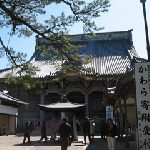
Nichiren (1222 – 1282) was one of the founders of Kamakura New Buddhism, new schools of Japanese Buddhism founded during the Kamakura period (1185 – 1333). He was born in Kataumi Kominato, Chiba in 1222, after the Samurai days began with the Jokyu Disturbance, the fight between the retired Emperor and the Kamakura Shogunate in 1221. This temple was built to commemorate its birth.
This temple was moved to the present place of Kamogawa City, after two natural disasters of 1498 and 1703. The wells of the birth still sprinkled with water even if the location had changed. The treasure hall introduces the drawing of an old map of Tanjoji Temple, and the image of Nichiren at 12 years old, when he started the practice at the local Seichoji Temple and changed its name to Yakuomaru.
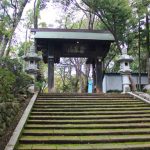
Ippen Shonin (1239 – 1289): a Buddhist priest, who founded the Jishu sect of Pure Land Buddhism, traveled around Japan, introducing Buddhism to common people. He used chanting and dancing prayers, started his lifelong tour of Nenbutsu Yugyo, Traveling with many leading practitioners of Nenbutsu, chanting the text of the hope of rebirth in the Pure Land, during the Kamakura period (1185 – 1333).
He was heading to Kamakura, while society was full of anxiety from the Mongolian Invasions of Japan (1274 and 1281). This temple was founded by the fact that Ippen decided on this scenic spot across from the Sagami River, as a place of religious practice, after he had the manifestation of Myoken Bosatsu, the deification of the North Star, during his travels.
The principal image of this temple is the standing statue of Ippen Shonin, which the head is said to have been engraved by Ippen Shonin, himself. Tokuhon Shonin (1758 – 1818), was a Buddhist priest, who practiced religiously with Nenbutsu, chanting the text of the hope of rebirth in Pure Land. He traveled around Japan, spreading Nenbutsu in Izu Shizuoka, and the Kanto region in the latter part of the Edo period (1603 – 1868). Don’t miss Tokuhon Nenbuto, the stone monument of Tokuhon Shonin’s visit.
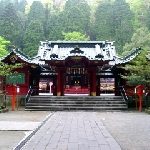
In 757, High Priest Mangan Shonin founded Hakone Shrine. He enshrined Kuzuryu Ookami, as a guardian deity of Lake Ashinoko, after he exorcised Kuzuryu, the Venomous Nine-headed Dragon, and Vasuki (snake) of the Hindu mythology, India, which had raged in the lake.
The lake water of Lake Ashinoko springs from the surrounding mountains. Many large trees sleep on the bottom of Lake Ashinoko, which was dammed by the collapse of the volcanic edifice. This Kuzuryu legend also conveys the connection among fire, water and life.
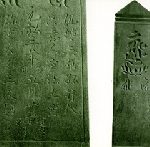
Pure Land Buddhism and Mappo-shiso, which reached the height of its popularity in the noble court in Kyoto, in the latter part of the Heian period (794 – 1185), had spread to Samurai bands in Musashi Province in the Kamakura period (1185 – 1333). Itahi, a memorial tower, was built and became popular among the Samurai bands.
This temple in Iruma City worships the Itahi, of Kaji Iesada, who died with Hojo Takatoki (1303 – 1333) the last Shikken, the Regent of the Kamakura Shogunate. In the Itahi, Poetic Verse, “Rinjinge” by Mugaku Sogen (1226 – 1286) a prominent Zen priest and a migrant from the Southern Son Dynasty (1127 – 1279), was craved. Mugaku Sogen supported Hojo Tokimune (1251 – 1284) the 8th Shikken, the Regent of the Kamakura Shogunate, the son of Hojo Tokiyori, the 5th Shikken, and leader of forces against the Mongol Invasion.
Poetic Verse, “Rinjinge”,made in endangered by a sword, said, “I did a comprehensive study to seek the real universe, and finally got the answer. I already know that I am vanity. This means when you swing your sword, you will just cut through a spring wind.” This Itrahi is the best one in Saitama Prefecture.
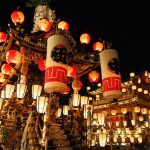
The town originally built around this shrine was the main center of produced goods. It was called Omiyago, the Omiya Village. There is Mt. Bukouzan (1304m) on the south extension of the shrine and the approach to the shrine, a sacred place that worshiped Mt. Bukouzan as Kannabi, a holy mountain.
The Chichibu-yomatsuri, the night parade float festival, tells the story of the god of Mt. Bukouzan and the goddess of Chichibu Shrine, who meet once-a-year. This night festival intertwined with the history of faith and the climate in Chichibu inherits the magnificent splendor of Chichibu that created the history of Japan.
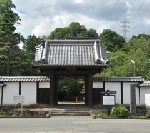
This temple was founded by Shinou Soken, a monk of the Soto school of Zen in the Age of Provincial Wars in the 15th – 16th centuries. There is a spring called Ryuosui, sacred water, at the precincts, which is said to have sprung when Soken converted the evil dragon living beneath Takaiwa cliff on the north side of Shingendutsumi, river embankments that divert the river’s course.
This temple was a temple of the Buddhist Shingon sect in the ancient times, and the temple name of Jisho, illuminated Mercy, came from Mt. Fuji, which is located on the south side of the Akasaka plateau and faces this temple. The springs from the mountains and rivers has been worshiped as being connected to awe-inspiring, multi-layered structures on Japanese Islands.

Waterfall Uramino-taki, is one of three outstanding waterfalls at Nikko. The eruption of Mt. Nantaisan created scenic spots, such as lakes, waterfalls, grasslands and wetlands. Waterfall Uramino-taki, has the aesthetic of stylish, thin threads hanging down from the surrounding rocks.
Matsuo Basho (1644 – 1694), the most famous poet of the Edo period, wrote a poem about the waterfall in the Oku no hosomichi, the Narrow Road to the Deep North, the major texts of poems and essays, as a travel journal by Matsuo Basho, – “Shibarakuwa Takini Komoruya Geno Hajime – Hiding yourself in the cave behind the waterfall and watching the flow of the waterfall, I feel a little bit of early summer practices of the monks. This scenic spot was seen as mountain of gods. That had kept people away from it, until Shodo Shounin, a High Priest in the 8th – 9th century, climbed this mountain and opened the temple. The flow of this waterfall can be seen as a mysterious flow of consciousness.
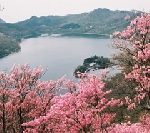
At the northern end of the Kanto Plain, the rich green range of Mt. Akagiyama had supported the hearts of people and the water flowing from its lake had been the life line of people at the southern foot, since the Jomon and Paleolithic Period, the Old Stone Age of more than 30,000 years ago. Akagi Shrine on the shore of Lake Onuma has enshrined Akagi Daimyoujinn, Akagi’s Great Luminous Deity, and the Gods of Mt. Akagiyama and the Lake.
In the 9th century, the Imperial court ranked this shrine highly, expanding its domain to the entire Mt. Akagiyama. This shrine then was registered as Myoujin Tasiha, a shrine of the highest rank in the Engi-Shiki, the code of Japanese governmental regulation in the 10th century. The ancient age and Japanese history had been syncretized here.
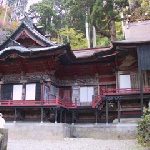
“Mythology and Worship” -Mt Haruna, with a height of 1,391 meters, was said to have been made by Daidara-bocchi, a giant in Japanese mythology. The volcanic activity of Mt. Haruna supplied the Kanto region with a layer of loam. The relics of the Paleolithic age were found in this layer. The worship at Mt. Haruna may have started 30,000 years before.
This shrine is located at the southwestern foot of Mt. Haruna. The history of mountain Buddhism has been handed down, and a three-story pagoda is in the precincts. The dragon sculptures on Soryumon Gate, and the coffered ceiling in the hall drawn by the painter patronized by the Sendai Domain, convey the high level of faith. The shrine that enshrines the sacred body in the back of the rock, decorates the shape of ancient Japanese prayer with the majestic beauty of the early modern times.
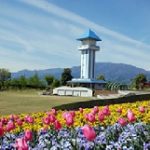
There used to be about 30 tombs in this area called the Akasaka Plateau. The historic site, Matsuzuka Tumulus has a few tombs, still remain in the Plateau, where Arrowhead, Straight sword, Gold Head Ornaments, and Sue ware, unglazed vessels, were excavated to show the connection to the Chinese continent. Wakamizu, sacred water that brings back youth, has been the subject of worship in Japan.
The nearby Jishoji Temple, springs out Ryuosui, sacred water, which is said to be connected to the north side of Shingendutsumi, embankments of the river that divert the course of the river. The nickname Dragon Park is derived from this Ryuosui.

Mt. Nantaisan is the most sacred mountain in the Kanto region and its eruption created scenic spots, such as lakes, waterfalls, grasslands and wetlands. Chuzenji Lake was discovered by Shodo Shounin, a High Priest in the 8th – 9th century, when he succeeded in climbing the mountain for the first time, and opened the temple during the Nara period (710 – 794). Since then, Japanese mountain ascetic practicers loved the lake. Shodo Shounin‘s grace is located on Kozukeshima Island, in the lake.
The Waterfall, Uramino-taki, is one of three outstanding waterfalls at Nikko and has the aesthetic like thin threads hanging down from the surrounding rocks.
Matsuo Basho (1644 – 1694), the most famous poet of the Edo period, made a poem for this waterfall, at Oku no hosomichi, the Narrow Road to the Deep North: the major texts of poems and essays as a travel journal by Matsuo Basho. The poem is “Shibarakuwa Takini Komoruya Natsuno Hajime – Hiding yourself in the cave behind the waterfall and watching the flow of the waterfall, I feel a little bit of early summer practices of the monks”
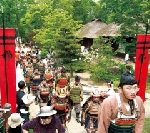
It is said that the Heike family found a hot spring on the riverbank of the Yunishi River in 800 years ago, when they escaped from pursuers of the Genji clan, after the Battle of Dan no ura in 1185, a major sea battle between the Minamoto clan and the Heike (Taira) clan. Heike, in the Kanmon Strait, was completely destroyed. To help heal the wounds.
Heikenosato is a symbol place of sedation and good health in Nikko Tochigi. The traditional tiled roofs remain along the river, and Heikenosato introduces, through restored thatched houses, the life and lifestyle of the Ochudo, fugitives.
Here, the customs of Ochudo, to avoid standing-out, remains. Like No Koinobori (carp-shaped streamers are drawn up, as a traditional event to pray for boys to grow up healthy and strong) they prayed for the growth of young warriors.
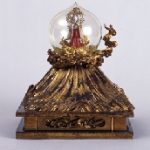
The northern base of Mt. Fuji has always had poor soil and cold highlands. This encouraged each village had to help one another, first through the use of forests and agriculture and, later, through textile production and distribution.
This museum presents the history, folklore, and industry of Fujiyoshida City. It also displays historical materials about the Fuji faith, including “Why did Mt. Fuji become a mountain of faith?” and “Why does Mt. Fuji attract so many people?” At this museum, you can easily learn about the charm of Mt. Fuji.
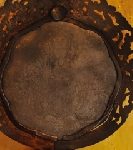
This shrine is located in Toyokawa Daisen Akita. It enshrines the only national treasure in Akita Prefecture, the Mirror with Inscribed Senju Kannon the Buddhist Goddess of Mercy with a 1000 arms. It is made of bronze with a diameter of about 13.5cm. The standing Senju Kannon in the center, Hachibushu, the eight guardian disciples of Buddhism in the round and Basosen, the Vasus, the deity of Hinduism and Kudokuten. Laksmi, the Goddess of Hinduism, brings wealth and good luck are drawn in the back of the mirror.
This mirror was brought to this place by Sakanoue no Tamuramaro (758 – 811), the first Shogun, Great General, from the capital of Kyoto as his protective deity. The mysterious beauty conveys Shinbutsu-shugo, the syncretism of Shintoism and Buddhism, and Japanese style.
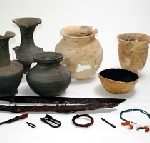
The statue of Kanzeon Bosasatsu, the Sacred Avalokitesvara possessed by Shofukuji temple has a rich and beautiful appearance. Oirase Town is located on the sloped plateau facing the eastern Pacific Ossian. This town along with this statue, has beauty and history that has continued with rich nature since the Jomon period.
The oldest large-scale settlement site in Japan, Nakanoutaiiseki is a ruin from the early Jomon period. And twelve pit dwellings were discovered there. Akobo Tombs in the 7th-9th century is a large group of tombs at the terminal stage of the Tumulus and consists of more than 60 old tombs. Numerous jade balls, tube balls and swords were excavated.

Natori City has many ancient ruins. There is the oldest ancient tomb in the Tohoku region, the northernmost six prefectures of Honshu Island in Japan. These seem to be from the 3rd and 4th centuries. In the mid slope of Mt. Takadate (124m), in the northwestern part of the city, is Kumano Nachi shrine.
In 1899, when this Shrine was rebuilt, many Hanging Buddha image plates and bronze mirrors were excavated from under the shrine floor. Hanging Buddha image plates are a form of prayer for Shinbutsu-shugo, the syncretism of Shintoism and Buddhism. That expressed Buddha with Sanskrit characters and a three-dimensional Buddha image on a sacred mirror that was originally held at a shrine.
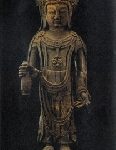
The statue of Sho Kanzeon Bodhisattva at this temple is the oldest statue of Buddhism in Aomori prefecture. The statue was designed as a cherubic figure of childlike proportion, adorned with gorgeous ornaments that exemplify the small gold plated bronze Buddhist statues of the Hakuho period (673-710). This statue was originally created during the 7 Century, in the Kinki region, central Japan. Oirase town, Aomori, located along
Oirasegawa River by Lake Towada, sits on a cuesta, facing the Pacific Ocean to the east, and has a rich history, dating back to the Jomon period.
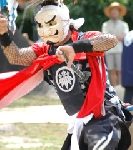
It is a traditional folk art passed down in the Kitakami area, which has a 1,300 year history. This performance, with a demon mask and a vigorous dance, is the sword dance for Amida Buddha (the principal image of Buddha in Pure Land). The succession activities have been handed down by the Geto Onsen, hot spring, too. The name of the hot spring is derived from Guto, in the Ainu language, which means the place of the cliff. The natural monument, Sekaika, Precipitates of calcium carbonate that can be found at hot springs and other springs, is Japan’s largest fountain dome, with a height of 17m above the river and a width of 25m at the bottom. It is made from the same process as the limestone cave and is also called “Tenguiwa – large long-nosed goblin shaped rock”.
-150x150.png)
This house introduces the history of Futatsui Town, which has lived with Akita cedar. Exhibited from the Aso site of the late and last Jomon period (4,000 to 2,300 years ago). It is located to be near to the junction of Yoneshiro River and Ani River. The Clay mask was an excavation from the last Jomon period. It seems to be a decorative mask hung on a wall, not one to be worn. There are fewer of these pieces than Clay figures. But they have less damage and are realistic, which suggest that they were owned by a limited number of people. And it shows the possibility that the Jomon society was transformed from a flat society to an Emirate society in the last Jomon period.
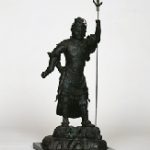
This temple is a temple of the Shingon sect (Buzan school), and uses Hakkaisan as its prefix name, in honor of Mt. Hakkaisan. This temple was originally located at the foot of Mt. Hakaisan, Minami Uonuma, Echigo Province, Niigata. When the Uesugi family moved to Aizu Province Fukushima from Echigo, this temple was relocated. And this temple became the family temple of successive lords of Yonezawa Domain, after moving to the second bailey of Yonezawajo Castle.
The principal image of this temple is Doroashi Bishamonten, Guardian god of Buddhism, with Mud Foot, which was the principal image of the hall of Bishamonten on the north side of the keep of Kasugayamajo Castle, Echigo. This statue of Doroashi Bishamonten was worshiped to everyday by Uesugi Kenshin (1530 – 1578), the feudal lord of Echigo Province, which tells the history of the Uesugi family, a famous samurai clan.
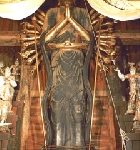
The principal image of this temple is the statue of an eleven-faced Kannon, the Buddhist Goddess of Mercy, with a 1,000 arms, which was engraved in 808 with the spirit of Itto Sanrai. He carved a stroke in a large tree and prayed three times after every stroke. Tachiki, the standing tree with roots attached, in the story of a dream of Kobo Daishi Kukai (774 – 835), the founder of the Shingon sect, or Tokuitsu (749 – 824), a scholar-monk who founded many temples in northeastern Japan. The statue is one of the largest wooden statues in Japan, with a height of about 8.5m, carved from one tree.
Tachiki Kannon-do, the temple dedicated to Kanon, the Buddhist Goddess of Mercy, has a thatched-roof and is purely traditional Japanese-style architecture from the Kamakura period (1185 – 1333), where the 28 attendants of Kannon, Fujin, Wind God, and Raijin, Thunder God, are enshrined beside the statue of the principal image.

This shrine was built when Minamoto no Yoriyoshi (988 – 1075), the head of the Minamoto clan, and his son Minamoto no Yoshiie (1039 – 1106), went to Mutsu Province for Zenkunen no Eki (1051 – 1062), the war in Mutsu Province to subdue the Abe clan. They built this shrine in Kitakata Fukushima as a prayer for victory, transferring the separated spirit from Kumano Kii Province.
Nagatoko, the worship hall, is a building made of a Shinden-zukuri, architectural style of nobles’ residence from the Heian period (794 – 1192). The worship hall without walls is decorated with seasonal weeping cherry blossoms and large ginkgo trees. As you climb the stairs behind Nagatoko, you will see the buildings of Kumano Nachi, Kumano Shingu, and Kumano Hongu. They are filled with a dignified and solemn atmosphere.
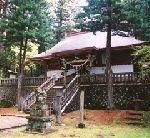
This shrine is located at the foot of Mt. Hayachine (1917m), on the straight line from Hanamaki City to this mountain. This shrine overlaps with the mountain worship of Mt. Hayachine since ancient times, and has a history of Shinbutsu-shugo, the syncretism of Shintoism and Buddhism.
Hayachine Kagura, sacred music and dance, is registered at UNESCO Intangible Culture Heritage List and is a collective term for the school of Take Kagura Dance in the dynamic style and the school of Otsugunai Kagura Dance in the fluent and delicate style.
The mouth of a god mask is open in Otsugunai Kagura, and it is closed in Take Kagura. The music uses 7 beats in Otsugunai Kagura, and 5 beats in Take Kagura. Those inextricably linked Kagura schools convey the history of the God mountain.
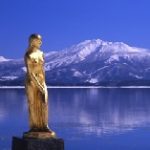
Lake Tazawa in Senboku city, Akita Prefecture, has a depth of 423.4 m, and is the deepest lake in Japan. The circular lake is about 20 km around and the lapis lazuli colored water is mysterious. The Tazawa Lake used to be a round hill long ago, but mysteriously became a lake.
This lake is connected with the folklore that the Ainu discovered the lake and that the Kumano faith is a sacred place. There is the female sculpture by Yasutake Funakoshi (1912-2002), who represented the Japanese modern sculpture field and who came from Iwate Prefecture.
He made it by overlapping the Tatsuko, transmitted as the mistress of this lake and eternal beauty.
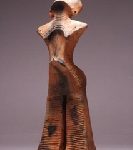
“Here, you will know The Elegance of Japan.” -The National Treasure Clay Figurine, Beauty of Jomon in the middle Jomon Period, 5,500 ‒ 4,000 years ago, was excavated at the Nishinomae Site in Funagata-machi, Yamagata. It is the ultimate symbol of beauty and sophistication, and the origin of the products made in Japan.
This museum is a general museum in Kajo Castle Park, consisting of seven departments of nature and humanities. The National Treasure Clay Figurine, is presumed to be a goddess because it was not broken intentionally and was not plump. It is the tallest clay figurine in Japan which is 45cm high.
Its Hatoshin figure, with a body 8 times longer than head, reminds us of contemporary art.
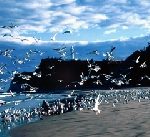
This coast is a long, narrow, south-north coast in the southeastern part of Fukushima Prefecture. Shinabaiko has a beautiful stretch of sandy seashore, dotted with pine trees, where the black pine trees of the tide-water control the forest. Futamigaura at Kattuo is named for the similar view with Futamiura in Ise Province, Mie. Two strange rocks are facing each other on the sea, and Isoishi, little rocks on the shore, line the area.
Hattachi Yakushi, the Haryuji Temple that worships Yakushi Nyorai, the Buddha of Healing, in Iwaki City Fukushima, is a scenic spot on the first sunrise of the year. There are strong tidal currents and many reefs around Shioyazaki, and the chalky Light House on a precipitous cliff is the guardian.
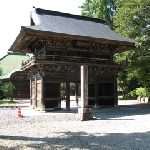
This temple was founded in 1227 by Ryokan (1148 – 1228), a priest of the Jodo sect and a leading disciple of Honen Shonin (1133 – 1212), a priest and the founder of the Jodo sect – the first independent sect of Japanese Pure Land Buddhism. The principal image of this temple is the statues of the Amida triad, which are the principal image of Buddha in Pure Land. The seated statue of Amida is said to be Daibutsu, the Great Buddha of Aizu, which has the halo decorated with a thousand statues of the incarnation of Buddha.
The statues of Kannon Bossatsu, the Buddhist Goddess of Mercy, who save people with Mercy, and Seishi Bossatsu, Bohhisattvas who save people with Wisdom, are the statues attending to the statue of Amida, seated in Yamato Zuwari, a posture in which one can move immediately with one’s toes up and one’s heels touching one’s hips. That posture is rare in the Tohoku region.
This temple is a flower temple with seasonal flowers blooming in a pond in front of this temple, like a Jodo garden, the garden of Pure Land. The mind for planting flowers with hands together is a training of Nenbutsu, a religious practice of chanting the text of hope for the rebirth in Pure Land.

Butsuto, a thriving Buddhist city of Aizu, started in the beginning of the Heian period (794 – 1185), by Tokuitsu (749 – 824), a scholar-monk of the Hosso sect of Buddhism. He founded many temples in northeastern Japan. Many Buddhist statues from the 9th century remain at this temple in Aizu Yugawamura Village. It is said that Tokuichi was involved in the making of those statues.
One is called Aizu Chuo Yakushi, the wooden seated statue of Yakushi Nyorai, the Buddha of Healing, which is thought as the center of Aizu Goyakushi, Five temples in the Aizu region that worship Yakushi Nyorai, and were founded by Tokuitsu.
The halo has a unique, engraving style from the beginning of the Heian period (794 – 1185) and is made of cedar boards jointed parallel with an arabesque relief pattern. It is the only National Treasure statue of Buddha in the Tohoku region.

Around Chushu no Meigetu, the harvest moon in Autumn, the mysterious scene
of Lake Mashu becomes deeper.
This lake in Akan Mashu National Park is the highest transparent lake in Japan. In ancient days, an extremely large volcanic eruption created this lake. There are steep mountain walls around the 20km lake, and the water is deep blue. Although access is restricted for environmental protection, there are three observation decks. From the third and highest observation deck (670m), you can see the mysterious scene.
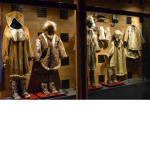
“Their clothing shows their belief in northern people” – Traditional clothes made from various animal leather and some types of bark, are rugged and efficient in harsh natural environments.
However, luck also is needed. Ainu garments, Attus, are made from the bast fibers of the elm tree. They have patterns that also have the meaning of sealing evil spirits and amulets. The pattern shows an algorithm. This museum introduces prehistoric culture, which has a close relationship with the cultures of the peoples of the northern regions, in practical materials.
From Inuit(Eskimo) in Greenland to the east to Sami People in Scandinavian to the west. It exhibits those items according to themes such as clothing, food, living, livelihood, spiritual culture, and traditions of culture.
